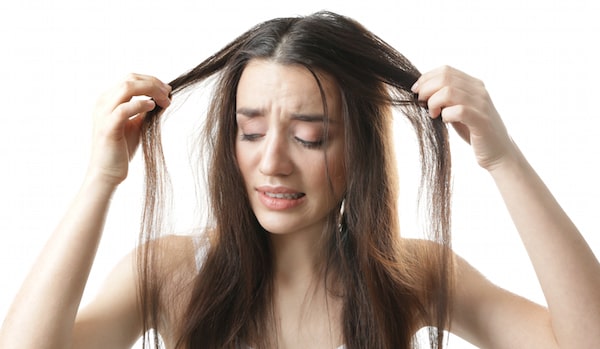Possible Side Effects of Rogaine Use for Female Patients

Hair loss is often viewed as only being an issue for men but the loss of hair also impacts the lives of many female patients. One of the most popular treatments for hair loss is the use of minoxidil on the scalp. Minoxidil, AKA Rogaine, is a topical ingredient that is approved by the Food and Drug Administration for use in the treatment of hair loss. Minoxidil can address hair loss caused by the condition known as androgenetic alopecia (which is also known in women as female pattern baldness). Hair loss in women can start as a gradual amount of thinning located around the part in their hair. This thinning can start to become wider in appearance as the hair loss increases to become diffuse hair loss from the top of the head.
Possible Side Effects of Rogaine for Female Patients
While Rogaine is considered to be a safe hair loss option for women, there are some side effects female patients should know about when starting the treatment:
 Contact Dermatitis – Contact dermatitis can occur on the scalp not long after the application of the Rogaine product. Contact dermatitis can cause itchiness and flaky skin as well as irritation and redness. Patients are often advised to apply the Rogaine to a small section of the scalp during its first application. They should then wait around 24 hours to see if any of these symptoms develop before they start to use the product on a larger section of the scalp.
Contact Dermatitis – Contact dermatitis can occur on the scalp not long after the application of the Rogaine product. Contact dermatitis can cause itchiness and flaky skin as well as irritation and redness. Patients are often advised to apply the Rogaine to a small section of the scalp during its first application. They should then wait around 24 hours to see if any of these symptoms develop before they start to use the product on a larger section of the scalp.- Fetal Impairment – Rogaine has the potential to cause fetal development impairment in some females. The Food and Drug Administration lists Rogaine as a category C pregnancy drug. The drugs that are listed in this category have not undergone an adequate amount of testing on humans to show whether or not they are safe for fetal development. There have been some studies on animals that have suggested possible dangers and this is one of the reasons females are warned about using Rogaine on a regular basis. Women that are breastfeeding should avoid the use of Rogaine because it has the potential to enter the breast milk of a woman.
- Allergies – There are some allergies that can appear once a female patients start to use Rogaine. These allergy symptoms include inflammation in the treated area, hives and a rash. One of the reasons that allergy symptoms can occur is the fact that the person using Rogaine might be allergic to an ingredient in the product called propylene glycol. The person might also be allergic to the actual minoxidil itself. If the person is allergic to minoxidil, the use of Rogaine should not be continued.
- Cardiovascular – Some females that take Rogaine might develop a rapid heart rate which is also known as heart palpitations. While the chances of this are low, females with cardiovascular issues should consult with their doctor before they start taking Rogaine.
- Blood Pressure – Minoxidil can also be used as an oral medication to lower the blood pressure of a person. While minoxidil that is topically applied does not usually have an impact on the blood pressure of a person, patients that are taking diuretics might experience low blood pressure that can lead to a dizzy feeling or fainting.
Alternatives to Rogaine for Female Patients
Female patients that do not want to use Rogaine for their hair loss have some other options they can use to address the issue.
Some women turn to wearing a wig to hide their hair loss while others seek to discover the reasons for the hair loss. For example, hair loss during menopause can be the result of a hormonal imbalance.
If women want to have a treatment for hair loss that is natural in appearance and lasts a lifetime, they can make the decision to have a hair transplant. In a FUE hair transplant, hair follicles are removed from the donor area which is usually located on the back and sides of the scalp. The hair follicles are removed individually from the donor area and then placed in premade incisions in the balding area of the scalp. The hair follicles that are transplanted from the donor area are resistant to balding so patients do not need to worry about the transplanted hair falling out in the future.
Discuss the Use of Rogaine with a Doctor
Female patients that are interested in undergoing a hair transplant should schedule a consultation appointment with a board-certified doctor that is experienced in treating hair loss in female patients.
The doctor can examine the female patient to determine the cause of the hair loss as well as the best option to treat the issue. If the hair loss is due to a hormonal imbalance or a medical condition, the ideal treatment for the issue might not be Rogaine.
In general, Rogaine can help female patients that have genetic hair loss that is visible as a gradual thinning of the hair along the natural part in the hair. Before making the final decision to use Rogaine, patients are advised to check with their doctor to make sure it is the best option for their medical needs.
MA